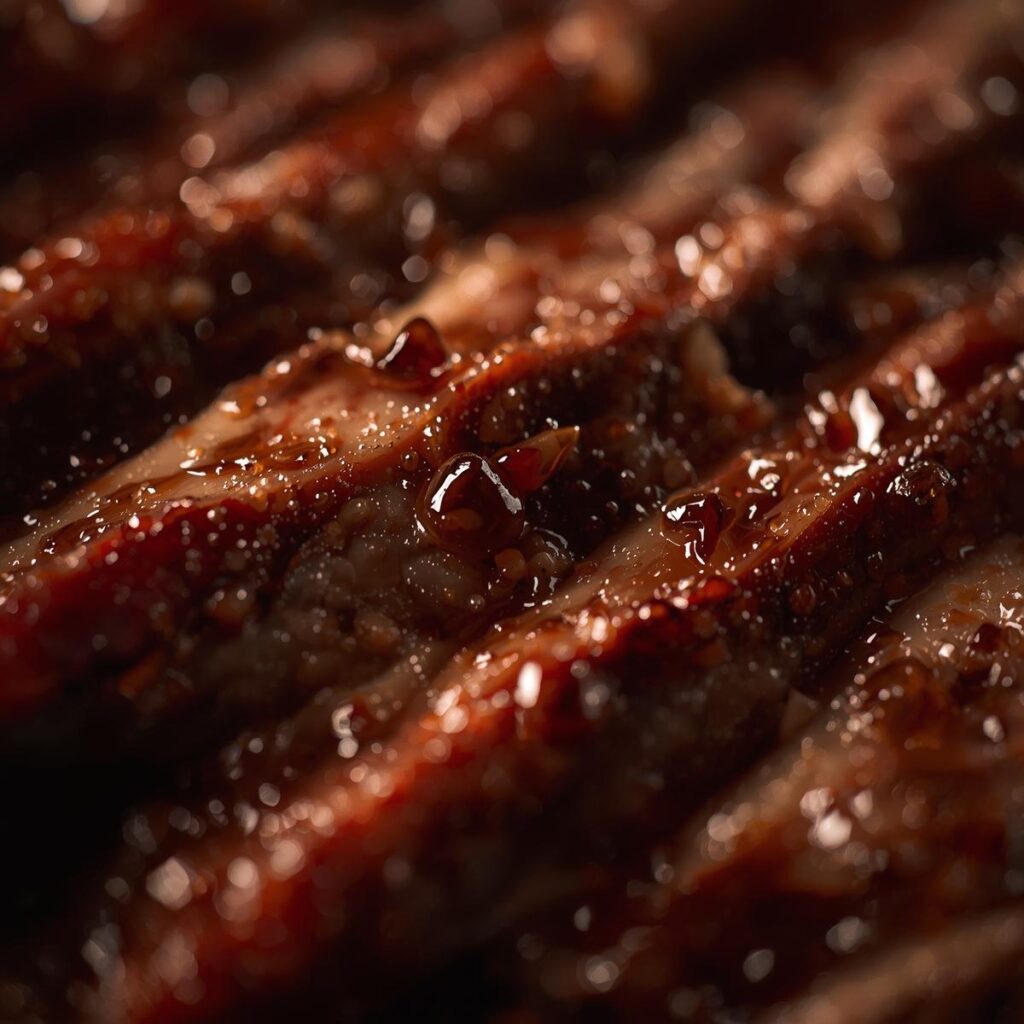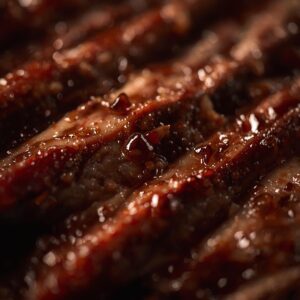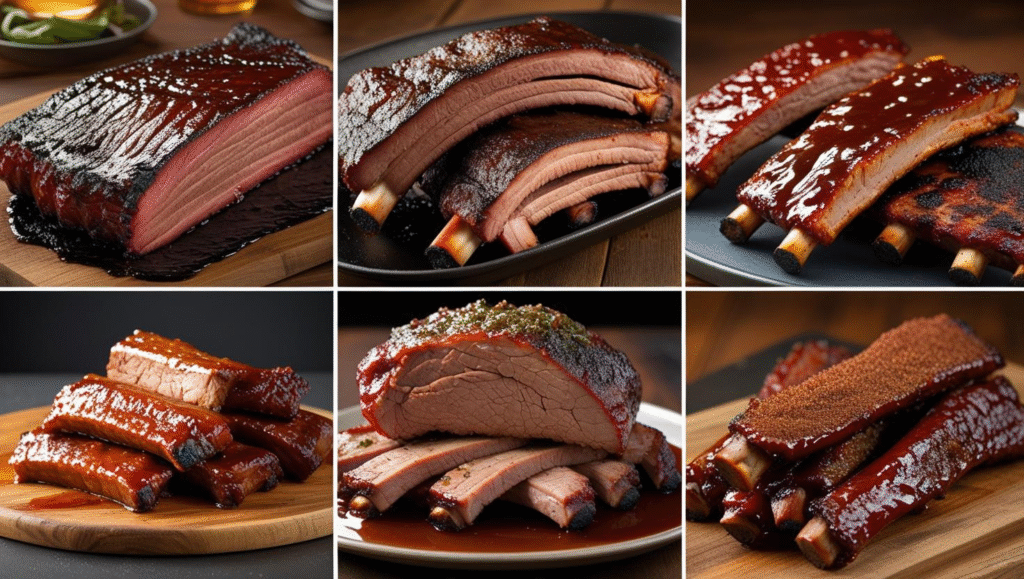The Ultimate Guide to Brining: your definitive resource.
Brining is one of the most effective techniques for transforming a dry, bland piece of meat into a succulent, flavorful masterpiece. It’s a simple, age-old method that has a profound impact on texture and taste. Whether you’re a seasoned pitmaster or a home cook looking to improve your skills, The Ultimate Guide to Brining is your definitive resource.
This guide will walk you through the science, the methods, and the practical application of brining so you can achieve perfectly juicy results every time. Brining is more than just a step in a recipe; it’s the secret to unlocking the full potential of your favorite proteins.
The Science Behind The Ultimate Guide to Brining
Understanding how and why brining works is the key to mastering it. Brining is not magic; it’s a culinary application of fundamental food science principles. It all comes down to the interaction between salt, water, and the proteins in meat.
The Osmosis Effect
The most critical part of brining is osmosis, a process where water moves across a semi-permeable membrane from an area of low solute concentration to an area of high solute concentration. When you submerge meat in a salty brine solution, the salt concentration is much higher outside the meat than inside. As a result, the water from the brine solution moves into the muscle cells of the meat, increasing its moisture content. This is how brining helps to prevent meat from drying out during cooking.
Protein Denaturation
Brining does more than just add moisture; it also changes the meat’s structure. The salt in the brine solution begins to dissolve some of the proteins, specifically myosin. This process, known as protein denaturation, causes the muscle fibers to unravel and relax. This not only makes the meat more tender but also creates more space within the muscle to hold onto the water that’s moving in via osmosis. When the meat is cooked, these proteins can’t contract as much, which prevents the moisture from being squeezed out.
The Salty Flavor
Finally, brining is an incredible way to season meat from the inside out. The salt ions in the brine penetrate deep into the meat, ensuring that every bite is seasoned evenly. This is far more effective than simply sprinkling salt on the surface, which only seasons the exterior. When done correctly, the result is a piece of meat that is perfectly seasoned, not overwhelmingly salty, making The Ultimate Guide to Brining an essential tool for flavor.
Wet Brining: The Classic Method
Wet brining is the most common method, involving submerging the meat in a liquid solution of salt and water. It’s a straightforward process that yields fantastic results, especially for lean meats that are prone to drying out.
The Basic Brine Ratio
A basic brine is incredibly simple to make. The most common ratio is a 5-6% solution, which is roughly equivalent to:
- 1/2 cup of Kosher salt per gallon of water. This is a standard starting point for most brining applications. Be mindful of the type of salt you’re using, as different salts have different densities. Kosher salt is generally the go-to for brining.
Flavoring Your Wet Brine
While salt and water are the base, you can elevate your brine with a wide range of flavorings.
- Sugars: Brown sugar, honey, or maple syrup can be added to balance the saltiness and help with browning during cooking.
- Spices and Aromatics: Whole peppercorns, bay leaves, garlic cloves, onion slices, and fresh herbs like thyme and rosemary are excellent additions.
- Liquids: You can substitute some of the water with flavorful liquids like apple cider, beer, or a citrus juice to add an extra dimension of flavor.
Step-by-Step Instructions
- Prepare the Brine: In a pot, combine your salt, sugar, and flavorings with a portion of the water. Heat the mixture to dissolve the salt and sugar, then let it cool completely.
- Add the Remaining Water: Once cool, add the remaining cold water to the brine. It is essential that the brine is chilled to prevent bacteria growth.
- Submerge the Meat: Place your meat in a food-safe container, like a large pot or a brining bag, and pour the cold brine over it, ensuring the meat is completely submerged.
- Refrigerate: Place the container in the refrigerator and allow the meat to brine for the recommended time.
- Rinse and Dry: Remove the meat from the brine, rinse it thoroughly under cold water to remove any excess salt, and then pat it completely dry with paper towels before cooking.
Brining Times and Temperatures
The correct brining time depends on the size and type of meat. As a general rule:
- Whole Chicken (3-4 lbs): 4-6 hours
- Whole Turkey (12-15 lbs): 12-24 hours
- Pork Chops (1-inch thick): 1-2 hours
- Shrimp: 15-30 minutes
Dry Brining: The Modern Method
Dry brining is an increasingly popular alternative to the traditional wet brine. It involves rubbing salt directly onto the meat’s surface and letting it rest. This method is simpler and often results in a better crust.
How Dry Brining Works
Dry brining uses osmosis in two stages. First, the salt on the surface draws moisture out of the meat. This moisture dissolves the salt, creating a concentrated liquid brine. Second, this salty liquid is reabsorbed back into the meat, carrying the seasoning with it. This process leaves the surface of the meat dry, which is ideal for achieving a crispy skin.
The Process
- Pat It Dry: Pat the meat completely dry with paper towels. A dry surface is critical for the initial moisture draw.
- Season Liberally: Liberally coat the entire surface of the meat with Kosher salt. A good rule of thumb is about 1 teaspoon of salt per pound of meat. You can also mix in other spices and herbs at this point.
- Refrigerate: Place the meat on a wire rack set inside a baking sheet. Leave it uncovered in the refrigerator. This allows air to circulate and the surface to dry out.
- Wait: Let the meat rest for at least 12 hours, and for larger cuts like a turkey, up to 24-48 hours.
Pros and Cons
Pros:
- Crispier Skin: The dry surface leads to a better, more flavorful crust.
- More Concentrated Flavor: Since no water is added, the natural flavor of the meat is not diluted.
- Less Mess: No need for large containers or a watery solution.
Cons:
- Takes Longer: The process can take more time than a quick wet brine.
- Risk of Being Too Salty: It is easier to over-salt a piece of meat with a dry brine if you are not careful.
What to Brine and What to Avoid
Brining is a powerful tool, but it’s not suitable for every cut of meat. Knowing what to brine is just as important as knowing how to do it.
Best Meats for Brining
Brining is most effective on lean meats that lack significant intramuscular fat (marbling).
- Poultry: This is the most common application. Chicken, turkey, and Cornish hens benefit immensely from brining, which prevents them from becoming dry when roasted or grilled.
- Pork: Lean pork cuts like pork loin and pork chops are excellent candidates. Brining ensures they remain juicy and tender. This technique is especially useful when preparing pork for the grill, as explored in The Juiciest Pork Cuts for Smoking and Grilling.
- Fish: Lean, firm fish fillets like salmon, cod, or swordfish can be brined for a short time to improve their texture and moisture.
Meats to Never Brine
- Pre-Brined Meats: Many supermarket products, such as “self-basting” turkeys, are already injected with a salt solution. Brining these will result in an inedibly salty product.
- Corned Beef, Ham, and Bacon: These products have already been cured or brined as part of their production process.
- Heavily Marbled Cuts: Fatty cuts like a well-marbled prime rib or a high-end brisket don’t need brining. Their fat content provides all the moisture and flavor they need. For a deep dive into cooking these cuts, see our guide on How to Smoke a Brisket: A Texas Style Breakdown.
Troubleshooting and Advanced Tips
Even with a perfect recipe, a few tips can elevate your brining skills and help you avoid common pitfalls.
The Problem of Over-Brining
Brining for too long or using a solution that is too salty can cause the meat to become mushy and unpleasantly salty. It’s a fine line, so sticking to the recommended times is crucial. The texture becomes stringy and dense, and it’s a mistake that is difficult to fix.
Adding a Flavor Boost
For larger, thicker cuts like a pork shoulder, a brisket, or a pork belly (which, when brined and smoked, can be used for amazing ribs, as detailed in Memphis Ribs: Dry vs. Wet), injecting the brine directly into the meat can speed up the process and ensure a more even flavor distribution. A marinade injector is a simple, inexpensive tool that can make a huge difference.
The Cold Bath
Food safety is paramount. All brining must be done in a refrigerated environment. A brine is a perfect breeding ground for bacteria if left at room temperature. The meat should be completely submerged and kept below 40°F (4°C) at all times. The USDA’s food safety guidelines provide clear instructions on proper handling and refrigeration.
The Salt Type
While Kosher salt is the most common for brining due to its pure flavor and large crystals, other salts can be used. Sea salt, for example, is full of minerals that can add a complex, subtle flavor to your brine. However, because different salts have different densities, you must adjust the amount. A cup of table salt is much denser and saltier than a cup of Kosher salt. It is often a good idea to measure your salt by weight to be precise. A great source for understanding the science of salt is a reputable food chemistry site.
The Ultimate Guide to Brining FAQs:
What is the difference between wet and dry brining? Wet brining submerges meat in a salt-water solution, while dry brining involves coating the meat with salt, which creates its own concentrated brine.
How long should I brine meat? Brining time depends on the size and type of meat, ranging from 30 minutes for shrimp to 24 hours for a whole turkey.
Do I need to rinse meat after brining? Yes, you should always rinse meat after brining to remove excess salt from the surface before cooking.
Can I brine frozen meat? It is best to thaw meat completely before brining to ensure the process works effectively.
What kind of salt should I use for brining? Kosher salt is the most recommended due to its clean flavor and crystal size, though other salts can be used by adjusting the amount.
Conclusion
Brining is a deceptively simple technique that delivers profound results. By understanding the science of osmosis and protein denaturation, you can consistently produce meat that is moister, more tender, and seasoned to perfection. Whether you choose the classic wet brine or the modern dry brine, you now have all the knowledge you need to transform your cooking. The Ultimate Guide to Brining is your first step towards making every piece of meat you cook unbelievably juicy. Don’t let another dry meal happen again—embrace the power of salt and water.








